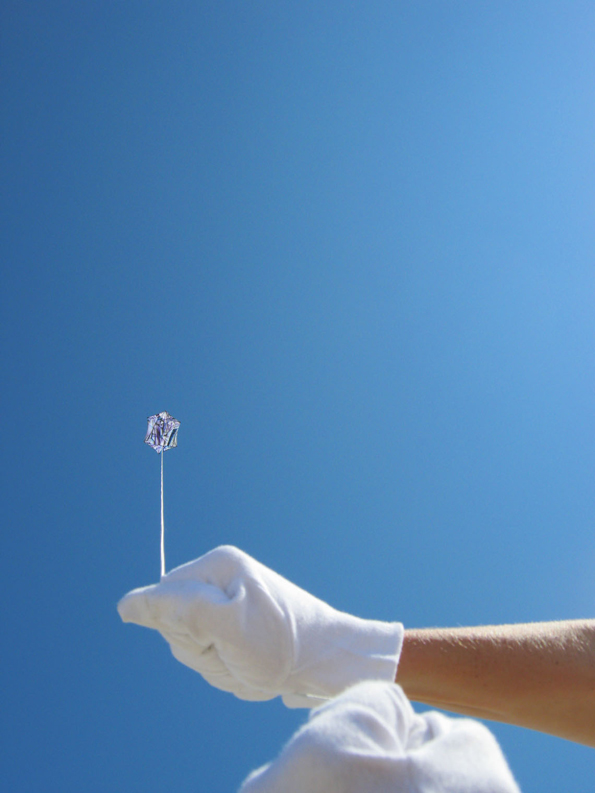Frouke Wiarda @Badgast
| 2012-04-04 16:06:37
'Musicaerial'
Presentation work-in-progress: May 13, 2012.
Première Musicaerial: international festival Gaudeamus (Utrecht). In 2012: festival Into the Great Wide Open (Vlieland). In 2013: Festival Oerol (Terschelling).
www.froukewiarda.nl
Geluidskunstenaar Frouke Wiarda verandert Badgast in een laboratorium voor wind, vorm en klank.
Sound artist Frouke Wiarda will turn Badgast into a laboratory for wind, shape and sound.
http://www.youtube.com/watch?v=5K83HkzZCFs&feature=channel&list=UL
M.m.v. / participating artists, composers and soundartists: Wouter Klein Velderman, Nico Huijbregts, Dyane Donck, Zoro Feigl, Stephan Balleux, Lisa Holden, Wouter Snoei, Wolter Wierbos, Arnaud Gernier, Nanette Kraaikamp, Peter Vos, Tineke van Veen, Benny Schreur, Leon Spek, Wilbert Bulsink, Christina Viola Oorebeek, Danny de Graan, Radboud Mens, Jeroen Hermkens, Marije Baalman.

Badgast is de perfecte plek waar de betrokken componisten en kunstenaars elkaar kunnen ontmoeten. Op deze plek krijgt iedereen de kans om de vliegers fysiek te ervaren en te horen. Hier worden de eerste composities en installaties gemaakt. Bij Badgast komen de verschillende manieren van denken en creëren samen en worden ideeën, kennis en ervaringen gedeeld.
Musicaerial is een evenement waarbij de vlieger het kunstwerk is en het extra zintuig om de bewegingen van de wind en de aarde te laten horen. De drie controlerende krachten waarom vliegers vliegen: opwaartse druk, trekkracht en zwaartekracht, vormen de basis voor deze muzikale en visuele reis. Wanneer in balans, is de vlieger in rust en vormt het een stil punt aan de hemel, geluiden zoemend van het universum.
Musicaerial zijn 11 vliegers beschilderd door 11 kunstenaars, omringt door 11 componisten en muzikanten. Voor dit project ontwerpen elf kunstenaars een vliegerkunstwerk. Elf componisten en geluidskunstenaars schrijven er muziek voor. De vliegers vormen zo het kunstwerk en functioneren als zintuig om bewegingen van de wind en aarde op te vangen en te verspreiden.
Vliegers werden gebruikt voor militaire observaties, weerobservaties en vlucht experimenten. Nu worden ze gebruikt om duurzaam stroom op te wekken en zelfs mammoettankers voort te trekken. In Musicaerial is de vlieger het kunstwerk in de lucht en dient zij als het instrument om de verschillende geluidsperspectieven op te vangen. De verschillende composities geschreven voor dit nieuwe instrument en geïnspireerd op de wind zullen bij uitvoering een nieuw perspectief geven aan de natuurlijke luchtbeweging van de atmosfeer, de kracht en de richting, die worden beïnvloed door de draaiing van de aarde. De uitvoeringen worden zo elke keer uniek, want de wind zal op elke plek weer anders klinken.
Musicaerial draait voor alles om de wind. En niet overal is die hetzelfde. De essentie van wind is zijn onvoorspelbaarheid. Ook de verbeelding van de wind en de betekenis ervan kent vele gedaanten. Voordat de natuurkunde zijn intrede deed, werden winden verbeeld door mensen of dieren. In de Middeleeuwen werden zij beschouwd als het domein van heksen en tovenaars. In sommige scheppingsmythen was de eerste mens slap en levenloos, totdat de wind ze vulde, adem gaf, en denkvermogen schonk. En volgens de Navajo-indianen is het de wind die de mens leerde spreken.
Badgast is the perfect place where composers and artists will meet. This place profides the team to physically experience the kite, its energy and the variarity of the wind. The first compositions and installations will be made.
Lift, gravity and drag form the basis for a musical and visual journey. Musicaerial is an event in which the kite is an artwork and the extra sense to hear the movements of the wind and the earth's sound. When balanced, the kite is at rest and a still point of art in the ocean sky, humming the sounds of the universe. Sending a message from the earth up and out into the sky, the kite is sending back a new soundperspective of the earth and the wind.
For this project, Frouke Wiarda asked eleven artists to design a flying artwork. A kite-specialist will turn them into flying kite-objects. Eleven composers and sound artists are going to write and perform music for and with this new instrument.
Kites were used for military observations, weather observations and flight experiments. Nowadays they are used for sustainable power generation and a force to pull supertankers over sea. In Musicaerial the kite is used as an artwork and as an instrument to translate the 'inaudible' and the invisible windlayers into sound. The various compositions written for this new instrument and inspired by the wind will give a new perspective on the natural movements of the air in the atmosphere; the force and direction, affected by the earth’s rotation. The performances will be unique every time, because the wind will behave and sound different on each location.
Musicaerial is about the wind. Not everywhere the wind is the same. In many countries there are particular weather conditions that have been given a specific name. The essence of wind is its unpredictability. Before the physics was introduced, the winds had the shapes of animals or humans. In the Middle Ages tricky winds were considered the domain of witches and wizards. In the creation myths of the southwest of the United States the first man was weak and lifeless, till the wind filled the body, gave it breath and thought and the ability to stand straight. And according to the Navajo Indians, it is also the wind that learned humans to speak.
